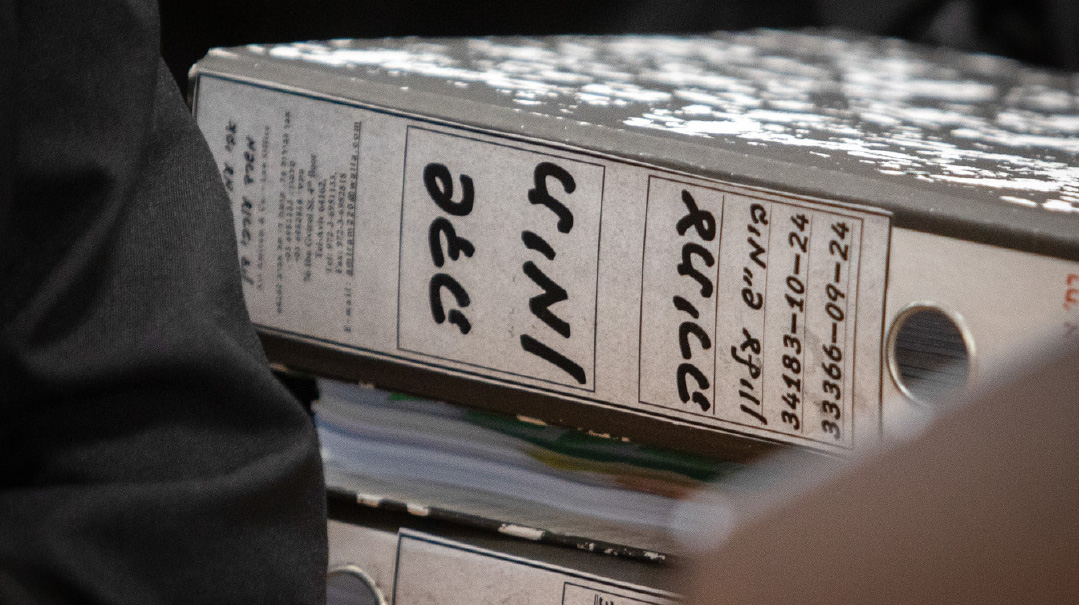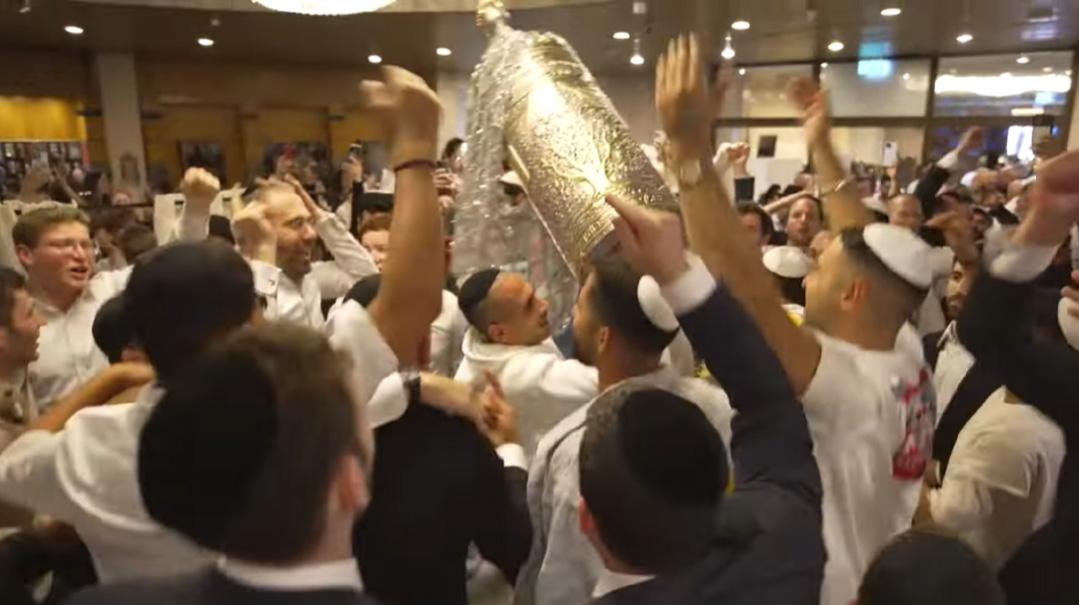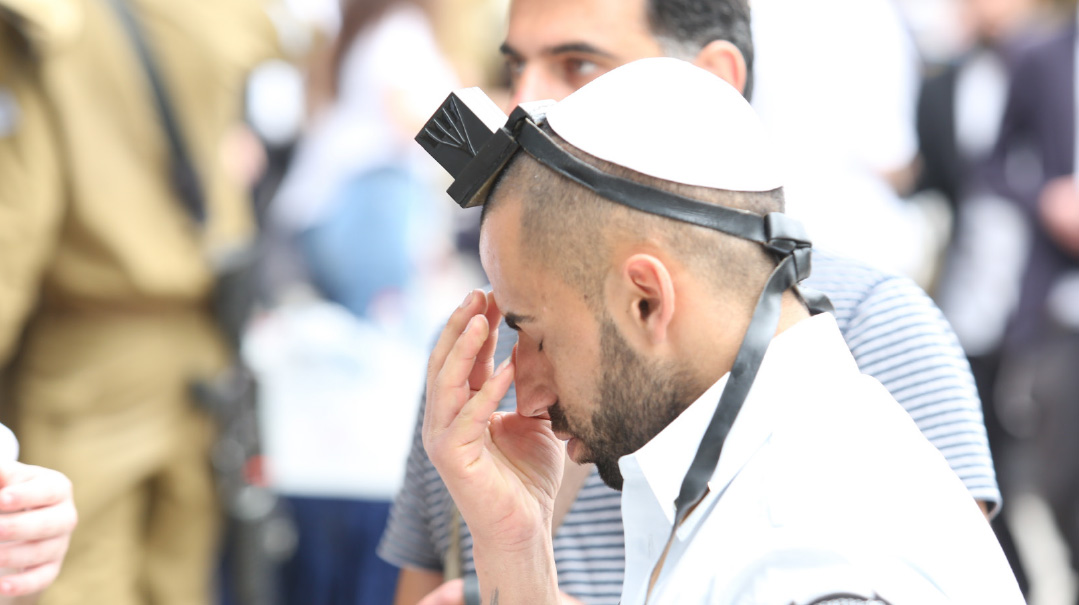Counting Up

If we view our fellow Jews as foreign to us... then we have destroyed the basis for Matan Torah
Admittedly it is a bit late in the counting of the Omer to be writing about its significance this week, but I’d still like to share some ideas that have recently inspired me.
One frequently asked question about Sefiras Ha’omer is: Why do we count upwards? Normally, when we look forward to some future event — in this case, Matan Torah — we count down, as the days leading to the anticipated event dwindle. So why is that not the case with Sefiras Ha’omer? Isn’t part of the counting of the Omer the recognition that Shavuos and the giving of the Torah is the true goal of Yetzias Mitzrayim, and without the receipt of the Torah, the exodus from Egypt remains incomplete? As Hashem tells Moshe at the sneh, “And this is the sign for you that I have sent you: When you take the people out of Egypt, you will worship G-d on this mountain” (Shemos 3:12).
ONE ANSWER to this question is given by the Aruch Hashulchan: The journey from Yetzias Mitzrayim to Kabbalas HaTorah is one from tumah to taharah. In Egypt, Bnei Yisrael descended to the 49th degree of tumah (impurity), and over the course of the seven weeks leading up to the receipt of Torah, they reached the 49th degree of purity. And just as a zavah counts seven days, from one to seven, as she leaves a state of impurity for one of purity, so too do we count upwards to the completion of seven weeks.
The Korban Ha’omer that we bring at the outset of the Omer, on the day after the Yom Tov of Pesach, is unique among the public sacrifices in that it is brought of barley, not of wheat. And the Mishnah in Sotah explicitly connects the Korban Ha’omer to the Minchah offering brought by the wife who is suspect in her husband’s eyes (Sotah 2:1), about which Rabban Gamliel says, “Just as her [suspected] actions are the actions of an animal, so is her offering made of animal food.”
Both the counting of the zavah and the Minchah of the sotah have the effect of permitting the woman to her husband. But there is a certain tension between the two ideas. The zavah is in fact impure, whereas the sotah is only suspect in her husband’s eyes. If she drinks and emerges unharmed, is a sign that she was innocent, if not of impropriety then at least of any action that would forbid her to her husband.
Rabbi Immanuel Bernstein in his The Call of Sinai reconciles the tension. In Egypt, we were in fact involved in impure practices from which we needed to purify ourselves by shedding those practices. At the same time, we retained an essential purity, even though our external behavior might have suggested otherwise, as in the case of the sotah.
Rav Moshe Shapira ztz”l provides further insight into the relationship of the Korban Ha’omer of barley, animal food, and the Shtei Halechem of wheat, human food, offered on Shavuos. The Arizal notes that the gematria of Mitzrayim plus fifty equals the gematria of nefesh. The movement over the fifty days culminating on Shavuos is that from the basic life-force, the nefesh beheimi that man shares with the animals, to the nefesh ha’adam, the highest manifestation of which is Moshe Rabbeinu on Har Sinai, where he neither ate nor drank — i.e., he shared nothing in common with the basic animal needs of the body.
That progression from the nefesh beheimi to the nefesh ha’adam also explains the connection between the period of sefirah and kavod (honor). As the Mishnah in Pirkei Avos (6:11) states, “All that the Holy One, Blessed be He, created in His world, He created solely for His glory, as it is said: ‘All that is called in My name, indeed, it is for My glory that I have created it, formed it, and made it” (Yeshayahu 43:7).
Only man can give honor to HaKadosh Baruch Hu, because only man possesses free will. And honor can only be given by a being exercising choice and who could also refuse to give kavod. That which is done automatically or instinctually conveys no honor. As a consequence, the development of the souls of Bnei Yisrael into nefashos ha’adam is simultaneously the development of their capacity to give kavod to Hashem, the very purpose for which the world was created.
That association of the period of Sefiras Ha’omer with the development of the capacity for kavod further explains why the failure of the talmidim of Rabi Akiva to act with kavod toward one another was so fraught with danger for them, as the Maharal explains. That is hinted to in the gematria of kavod, 32. The talmidim of Rabi Akiva died over the course of 32 days, and their deaths ceased on the 33rd day, Lag B’omer.
COUNTING UPWARDS, shifts the focus from the object of our aspiration — the Torah itself — to the recipients of the Torah. In other words, Sefiras Ha’omer is about the perfection of our character in order to be able to receive the Torah. The Maharal in his commentary on Pirkei Avos, Derech Hachaim, explains that the amount of Hashem’s infinite Torah that a human being can absorb is dependent on the size of his kli kibul (receptacle), and that, in turn, is a function of the perfection of his middos. Thus, Pirkei Avos, Chazal’s compendium of good middos, begins, “Moshe kibeil Torah mi’Sinai.”
The process of middos development must be step-by-step, a process of piling of building blocks upon building blocks. It cannot be achieved by leaps and bounds. Thus, we count the number of days (building blocks) — e.g., “today is eight days... of the Omer,” and not “today is the eighth day of the Omer.” The point is the building blocks accumulated.
One of the conditions for receiving the Torah is unity — vayichan sham Yisrael (Shemos 19:2), as one man with one heart — and that unity depends on the perfection of one’s middos, the ability to rise above one’s innate selfishness and egocentricity, to overcome one’s ga’avah and need to look down at others. Ultimately, unity requires seeing oneself as part of a whole and understanding that each of us has some unique piece of the puzzle to contribute to the formation of that whole.
Upon seeing 600,000 Jews, one recites the blessing Baruch Chacham harazim — Blessed is G-d, the Wise [Knower] of secrets.” Whereas the insensitive observer might see only a large, undifferentiated mass, Hashem knows that each of those 600,000 Jews is a unique riddle and secret. If we wish to know the secret of our fellow Jews, we must view them with respect and seek to uncover precisely what is unique and necessary about each and every one of them.
The Ramchal points out that the letters of raz, secret, reversed form zar, stranger. If we view our fellow Jews as foreign to us, as unworthy of our study and concern, then we have destroyed the basis for Mattan Torah.
Perhaps that is what Chazal mean that the talmidim of Rabi Akiva did not act with respect to one another. Obviously, that cannot be understood simplistically that they were rude to one another. Each was a great man in his own right.
But perhaps they did not adequately respect one another’s Torah and appreciate how the other’s Torah perspective added to their own and enriched it. In short, they did not fully grasp how much each had to gain from the other, and how the fullness of Torah depended on the unique perspective of each of them. That is the full measure of kavod toward our fellows.
As we mark our progress every night toward reliving Kabbalas HaTorah, may we each stop to reflect on all the work that is left to become worthy receptacles for the Torah, and above all how much we are dependent on our fellow Jews, each with his or her unique qualities and perspective, for the fulfillment of our individual mission as a part of Klal Yisrael.
(Originally featured in Mishpacha, Issue 1014. Yonoson Rosenblum may be contacted directly at rosenblum@mishpacha.com)
Oops! We could not locate your form.







